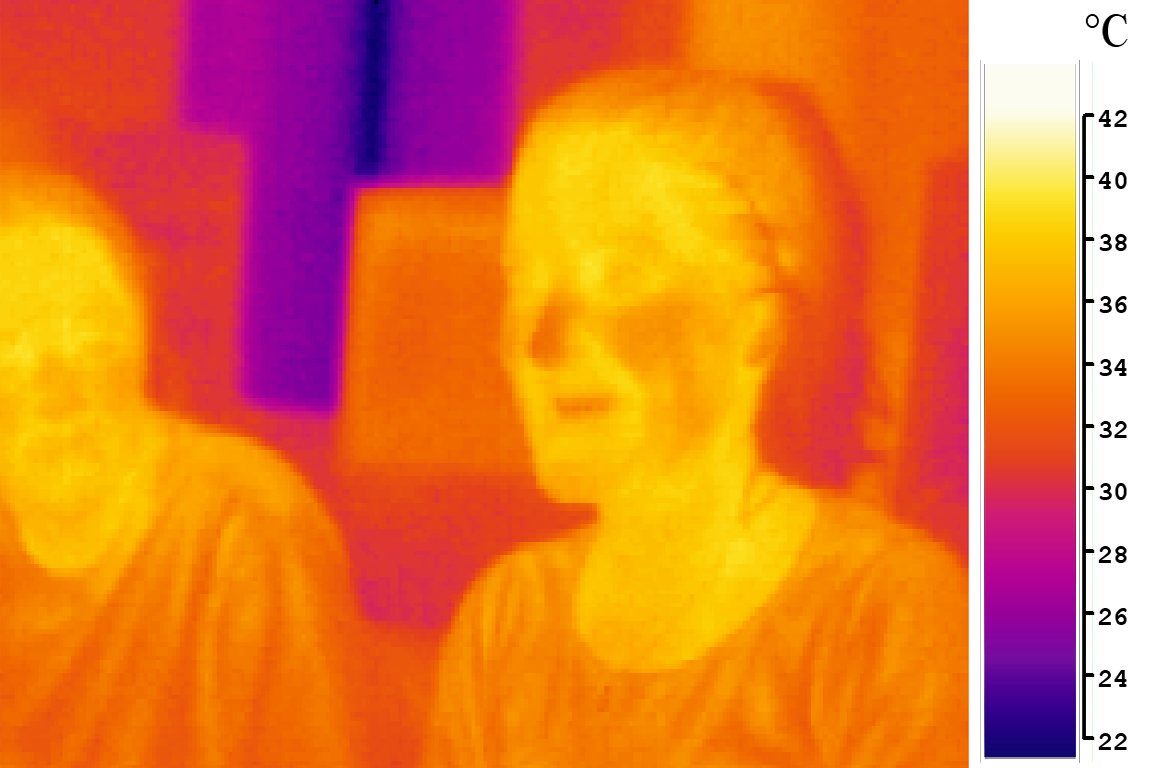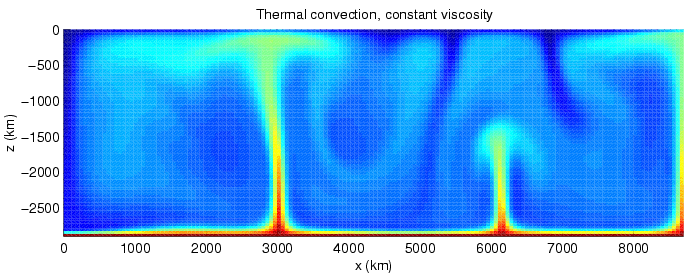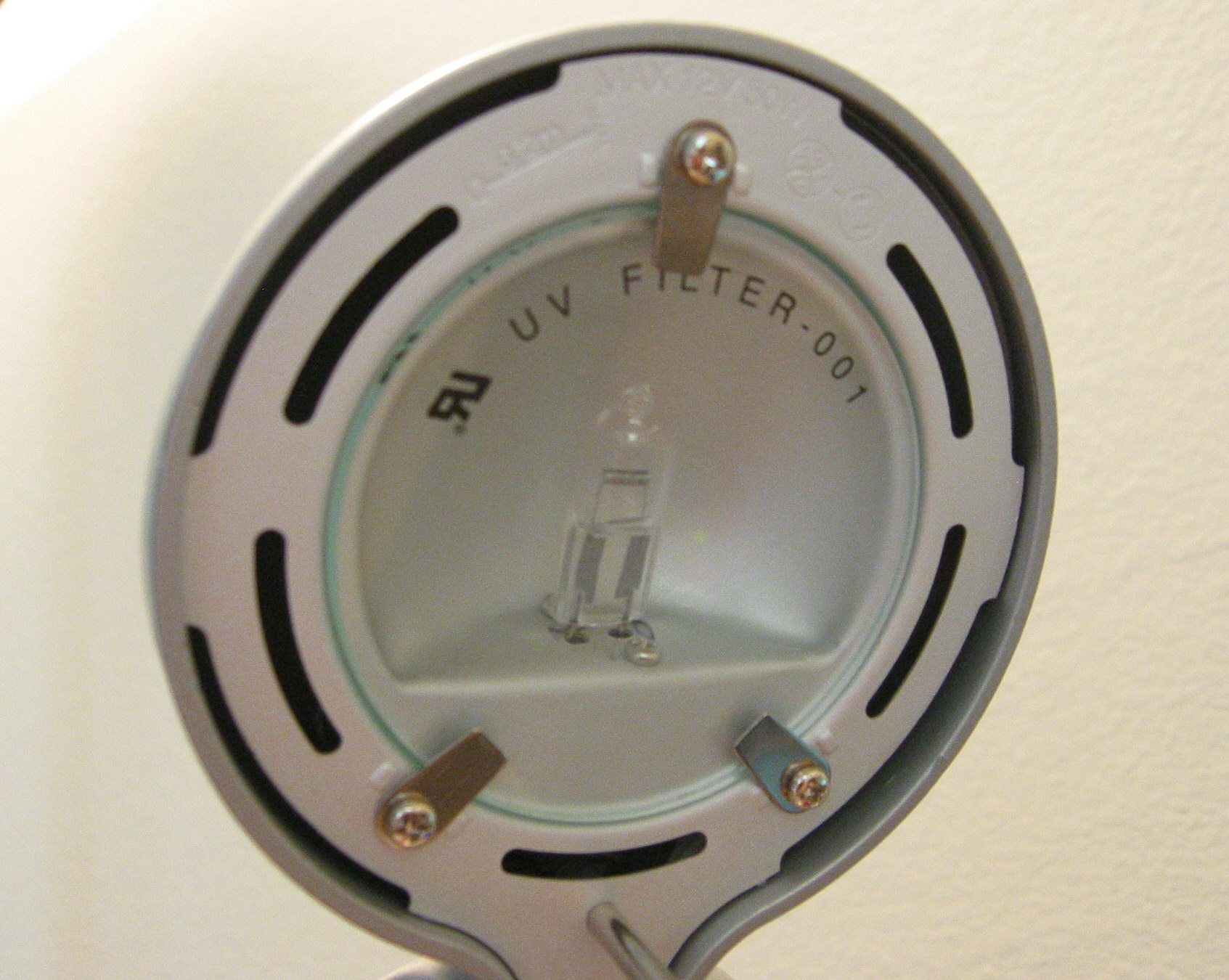|
Halogen Oven
A halogen oven, halogen convection oven, or halogen cooking pot is a type of oven that utilizes a halogen lamp as its heating element. Because a fan is used, it is also a convection oven. Halogen ovens are often noted for being more energy-efficient than a conventional electric oven due to their more effective heating of food and faster cooking times. Design A basic halogen oven features a heating chamber consisting of a clear glass bowl with a removable glass lid to which the heating assembly is secured. Inside the heating chamber, multi-level metal racks are used to elevate the contents during the cooking process. Within the heating assembly are the circular halogen lamp, a fan, and the controls for the oven which frequently include an automatic shut-off timer and a temperature control interface. On a basic model, the heating assembly has a handle to allow users to safely lift the lid off the unit. More elaborate models have a hinged lid mounted on an adjustable rear support ... [...More Info...] [...Related Items...] OR: [Wikipedia] [Google] [Baidu] [Amazon] |
Oven
upA double oven A ceramic oven An oven is a tool that is used to expose materials to a hot environment. Ovens contain a hollow chamber and provide a means of heating the chamber in a controlled way. In use since antiquity, they have been used to accomplish a wide variety of tasks requiring controlled heating. Because they are used for a variety of purposes, there are many different types of ovens. These types differ depending on their intended purpose and based upon how they generate heat. Ovens are often used for cooking, usually baking, sometimes broiling; they can be used to heat food to a desired temperature. Ovens are also used in the manufacturing of ceramics and pottery; these ovens are sometimes referred to as kilns. Metallurgical furnaces are ovens used in the manufacturing of metals, while glass furnaces are ovens used to produce glass. There are many methods by which different types of ovens produce heat. Some ovens heat materials using the combustion of a ... [...More Info...] [...Related Items...] OR: [Wikipedia] [Google] [Baidu] [Amazon] |
Halogen Lamp
A halogen lamp (also called tungsten halogen, quartz-halogen, and quartz iodine lamp) is an incandescent lamp consisting of a tungsten filament sealed in a compact transparent envelope that is filled with a mixture of an inert gas and a small amount of a halogen, such as iodine or bromine. The combination of the halogen gas and the tungsten filament produces a halogen-cycle chemical reaction, which redeposits evaporated tungsten on the filament, increasing its life and maintaining the clarity of the envelope. This allows the filament to operate at a higher temperature than a standard incandescent lamp of similar power and operating life; this also produces light with higher luminous efficacy and color temperature. The small size of halogen lamps permits their use in compact optical systems for projectors and illumination. The small glass envelope may be enclosed in a much larger outer glass bulb, which has a lower temperature, protects the inner bulb from contamination, and ... [...More Info...] [...Related Items...] OR: [Wikipedia] [Google] [Baidu] [Amazon] |
Heating Element
A heating element is a device used for conversion of electric energy into heat, consisting of a heating resistor and accessories. Heat is generated by the passage of electric current through a resistor through a process known as Joule heating. Heating elements are used in household appliances, industrial equipment, and scientific instruments enabling them to perform tasks such as cooking, warming, or maintaining specific temperatures higher than the ambient. Heating elements may be used to transfer heat via Thermal conduction, conduction, convection, or radiation. They are different from devices that generate heat from electrical energy via the Peltier effect, and have no dependence on the direction of electrical current. Principles of operation Resistance & resistivity Materials used in heating elements have a relatively high Electrical resistivity and conductivity, electrical resistivity, which is a measure of the material's ability to resist electric current. The Electri ... [...More Info...] [...Related Items...] OR: [Wikipedia] [Google] [Baidu] [Amazon] |
Convection Oven
A convection oven (also known as a fan-assisted oven, turbo broiler or simply a fan oven or turbo) is an oven that has fans to circulate air around food to create an evenly heated environment. In an oven without a fan, natural convection circulates hot air unevenly, so that it will be cooler at the bottom and hotter at the top than in the middle. Fan ovens cook food faster, and are also used in non-food, industrial applications. Small countertop convection ovens for household use are often marketed as air fryers. When cooking using a fan-assisted oven, the temperature is usually set lower than for a non-fan oven, often by , to avoid overcooking the outside of the food. Principle of operation Convection ovens distribute heat evenly around the food, removing the blanket of cooler air that surrounds food when it is first placed in an oven and allowing food to cook more evenly in less time and at a lower temperature than in a conventional oven. History The first oven with a fa ... [...More Info...] [...Related Items...] OR: [Wikipedia] [Google] [Baidu] [Amazon] |
Efficient Energy Use
Efficient energy use, or energy efficiency, is the process of reducing the amount of energy required to provide products and services. There are many technologies and methods available that are more energy efficient than conventional systems. For example, building insulation, insulating a building allows it to use less heating and cooling energy while still maintaining a Thermal comfort, comfortable temperature. Another method made by Lev Levich is to remove energy subsidies that promote high energy consumption and inefficient energy use. Improved energy efficiency in Green building, buildings, industrial processes and Energy efficiency in transport, transportation could reduce the world's energy needs in 2050 by one third. There are two main motivations to improve energy efficiency. Firstly, one motivation is to achieve Operating cost, cost savings during the operation of the appliance or process. However, installing an energy-efficient technology comes with an upfront cost, the ... [...More Info...] [...Related Items...] OR: [Wikipedia] [Google] [Baidu] [Amazon] |
HK Causeway Bay SOGO East Point Centre 德國寶光波爐 German Pool Halogen Cooking Pot Aug-2012
Hong Kong)., Legally Hong Kong, China in international treaties and organizations. is a special administrative region of China. With 7.5 million residents in a territory, Hong Kong is the fourth most densely populated region in the world. Hong Kong was established as a colony of the British Empire after the Qing dynasty ceded Hong Kong Island in 1841–1842 as a consequence of losing the First Opium War. The colony expanded to the Kowloon Peninsula in 1860 and was further extended when the United Kingdom obtained a 99-year lease of the New Territories in 1898. Hong Kong was occupied by Japan from 1941 to 1945 during World War II. The territory was handed over from the United Kingdom to China in 1997. Hong Kong maintains separate governing and economic systems from that of mainland China under the principle of one country, two systems. Originally a sparsely populated area of farming and fishing villages,. the territory is now one of the world's most significant fina ... [...More Info...] [...Related Items...] OR: [Wikipedia] [Google] [Baidu] [Amazon] |
Temperature Control
Temperature control is a process in which change of temperature of a space (and objects collectively there within), or of a substance, is measured or otherwise detected, and the passage of heat energy into or out of the space or substance is adjusted to achieve a desired temperature. Thermoregulation is the act of keeping the body at a static and regulated temperature that is suitable for the host despite the external temperature conditions. See also * Heat exchanger * Moving bed heat exchanger * Thermal Control System * Thermodynamic equilibrium * Industrial automation * Spacecraft thermal control External links * Article about PID control by Bob Pease (from archive.org References {{DEFAULTSORT:Temperature Control Temperature control, ... [...More Info...] [...Related Items...] OR: [Wikipedia] [Google] [Baidu] [Amazon] |
Thermostat
A thermostat is a regulating device component which senses the temperature of a physical system and performs actions so that the system's temperature is maintained near a desired setpoint. Thermostats are used in any device or system that heats or cools to a setpoint temperature. Examples include building heating, central heating, air conditioners, HVAC systems, water heaters, as well as kitchen equipment including ovens and refrigerators and medical and scientific incubators. In scientific literature, these devices are often broadly classified as thermostatically controlled loads (TCLs). Thermostatically controlled loads comprise roughly 50% of the overall electricity demand in the United States. A thermostat operates as a "closed loop" control device, as it seeks to reduce the error between the desired and measured temperatures. Sometimes a thermostat combines both the sensing and control action elements of a controlled system, such as in an automotive thermostat ... [...More Info...] [...Related Items...] OR: [Wikipedia] [Google] [Baidu] [Amazon] |
Infrared Light
Infrared (IR; sometimes called infrared light) is electromagnetic radiation (EMR) with wavelengths longer than that of visible light but shorter than microwaves. The infrared spectral band begins with the waves that are just longer than those of red light (the longest waves in the visible spectrum), so IR is invisible to the human eye. IR is generally (according to ISO, CIE) understood to include wavelengths from around to . IR is commonly divided between longer-wavelength thermal IR, emitted from terrestrial sources, and shorter-wavelength IR or near-IR, part of the solar spectrum. Longer IR wavelengths (30–100 μm) are sometimes included as part of the terahertz radiation band. Almost all black-body radiation from objects near room temperature is in the IR band. As a form of EMR, IR carries energy and momentum, exerts radiation pressure, and has properties corresponding to both those of a wave and of a particle, the photon. It was long known that fires emit invis ... [...More Info...] [...Related Items...] OR: [Wikipedia] [Google] [Baidu] [Amazon] |
Convection (heat Transfer)
Convection (or convective heat transfer) is the heat transfer, transfer of heat from one place to another due to the movement of fluid. Although often discussed as a distinct method of heat transfer, convective heat transfer involves the combined processes of Conduction (heat), conduction (heat diffusion) and advection (heat transfer by bulk fluid flow). Convection is usually the dominant form of heat transfer in liquids and gases. Note that this definition of convection is only applicable in Heat transfer and Thermodynamics, thermodynamic contexts. It should not be confused with the Fluid dynamics, dynamic fluid phenomenon of Convection#Terminology, convection, which is typically referred to as ''Natural Convection'' in thermodynamic contexts in order to distinguish the two. Overview Convection can be "forced" by movement of a fluid by means other than buoyancy forces (for example, a water pump in an automobile engine). Thermal expansion of fluids may also force convection. In o ... [...More Info...] [...Related Items...] OR: [Wikipedia] [Google] [Baidu] [Amazon] |
Microwave Oven
A microwave oven, or simply microwave, is an electric oven that heats and cooks food by exposing it to electromagnetic radiation in the microwave frequency range. This induces Dipole#Molecular dipoles, polar molecules in the food to rotate and produce thermal energy (heat) in a process known as dielectric heating. Microwave ovens heat food quickly and efficiently because the heating effect is fairly uniform in the outer of a homogeneous, high-water-content food item. The development of the cavity magnetron in the United Kingdom made possible the production of electromagnetic waves of a small enough wavelength (microwaves) to efficiently heat up water molecules. American electrical engineer Percy Spencer is generally credited with developing and patenting the world's first commercial microwave oven, the "Radarange", which was first sold in 1947. He based it on British radar technology which had been developed before and during World War II. Raytheon later licensed its patents ... [...More Info...] [...Related Items...] OR: [Wikipedia] [Google] [Baidu] [Amazon] |
Halogen Lamp
A halogen lamp (also called tungsten halogen, quartz-halogen, and quartz iodine lamp) is an incandescent lamp consisting of a tungsten filament sealed in a compact transparent envelope that is filled with a mixture of an inert gas and a small amount of a halogen, such as iodine or bromine. The combination of the halogen gas and the tungsten filament produces a halogen-cycle chemical reaction, which redeposits evaporated tungsten on the filament, increasing its life and maintaining the clarity of the envelope. This allows the filament to operate at a higher temperature than a standard incandescent lamp of similar power and operating life; this also produces light with higher luminous efficacy and color temperature. The small size of halogen lamps permits their use in compact optical systems for projectors and illumination. The small glass envelope may be enclosed in a much larger outer glass bulb, which has a lower temperature, protects the inner bulb from contamination, and ... [...More Info...] [...Related Items...] OR: [Wikipedia] [Google] [Baidu] [Amazon] |







